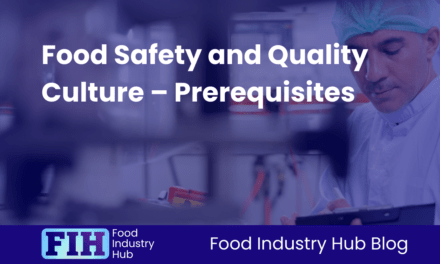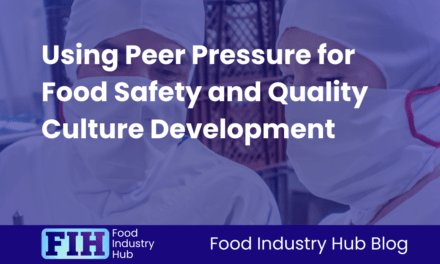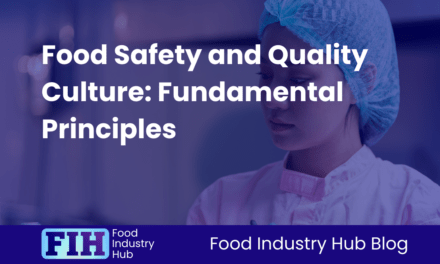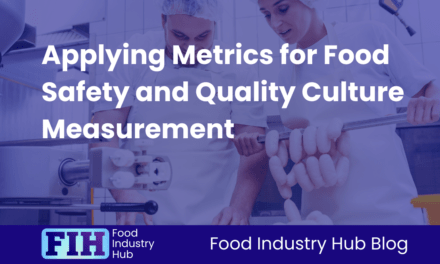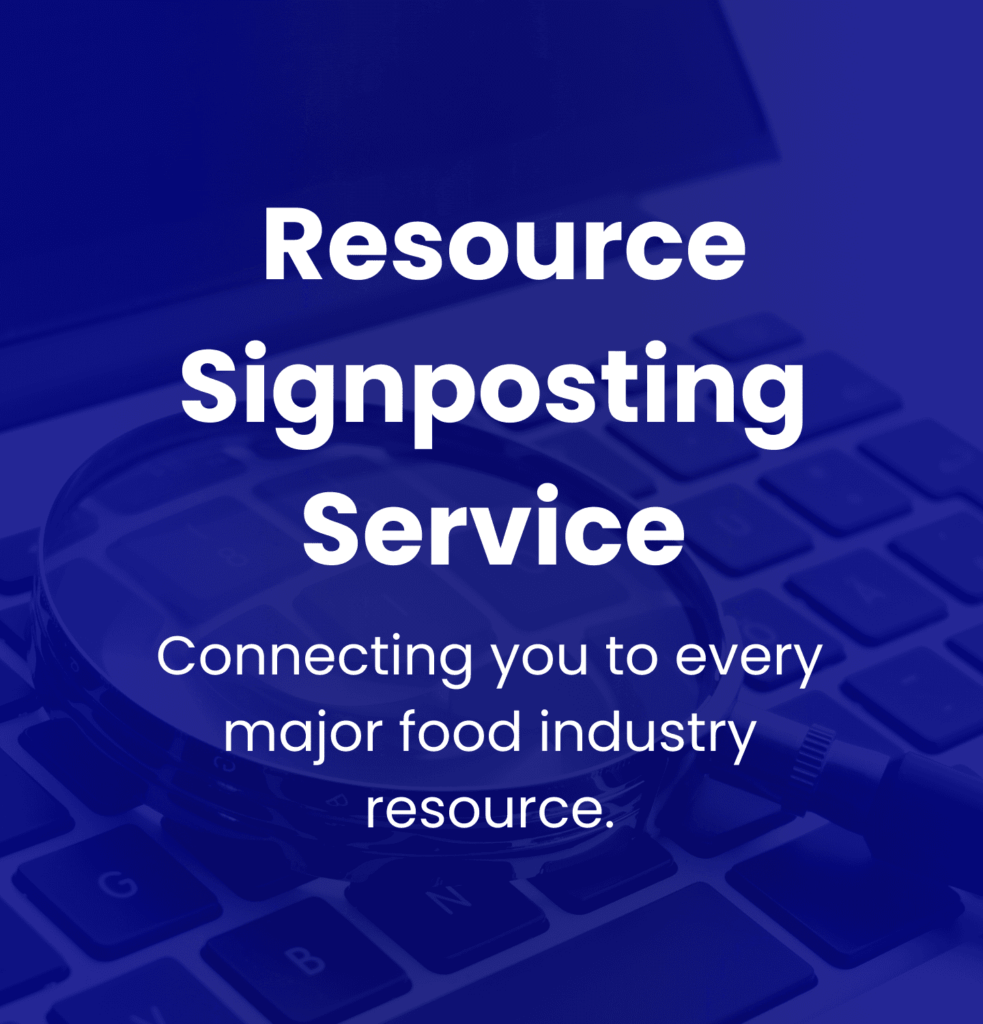Introduction
Food safety and quality culture is not separate to organisational systems or business structure. In reality, organisational culture is a characteristic -and expression- of the organisation, and manifests throughout all levels.
In this post, we’ll explore the interplay of organisational constructs and the food safety and quality culture throughout a food manufacturing business.
Read on to find out the influences of different organisational systems on food safety culture, how to influence and exert control over your food safety and quality culture, and How the culture of food safety and quality exists within the bigger picture of your organisation.
This post is part of a collection we’ve put together to explore the topic of food safety and quality culture, and you can explore the topic in more detail by browsing the related content.
Table of Contents
Key Takeaways
- If you have a strong vision and mission, people throughout your organisation will unite for a common cause. Aligning the vision and mission of the business with food safety and quality ideals can effectively orient the purpose of the organisation around protecting food safety.
- People literally make up the culture of your business. Social feedback and reinforcement influence and form the culture of an organisation.
- The consistency and presence of food safety in quality ideals throughout your business have a stabilising impact on the culture of your organisation.
- It is inevitable that with changing circumstances, every business must demonstrates an ability to adapt to new challenges. Building a responsive culture of confidence and agility will fundamentally improve and safeguard food safety standards over the long term.
- Hazard and risk awareness has a foundational importance for the way your organisational culture addresses risks and challenges – all of which must be met with competence and a foundation of commitment to Product Safety.

The Impact of Organisational Vision and Mission on Food Safety Culture
Your organisation’s vision and mission serve as the compass guiding every decision and action – including fostering a culture of safety and quality. From setting the tone for expectations to inspiring a collective dedication to upholding stringent standards, the alignment of vision and mission plays a pivotal role in shaping how food safety is perceived and practiced within your organisation. But how exactly do these statements translate into tangible actions and behaviours that ensure a robust food safety culture?
- Vision and mission statements inspire commitment to high food safety standards.
- Organisational alignment with values enhances the prioritisation of safe practices.
- Clear direction and expectations foster a strong culture of food safety.
- Senior management commitment is crucial for fostering compliance and excellence.
Vision and Mission for Food Safety
Crafting a clear and compelling vision and mission statement is paramount in establishing a strong foundation for fostering a culture of excellence in food safety. Your vision statement should outline the desired future state regarding food safety, inspiring employees to commit to the highest standards. It serves as a guiding light, steering the organisation towards its food safety goals.
The mission statement, on the other hand, defines the organisation’s purpose, outlining its core principles and values in relation to food safety. It communicates the organisation’s commitment to ensuring food safety practices are prioritised in all operations.
A well-crafted vision and mission statement can align employees towards a common goal, fostering a sense of purpose and direction within the organisation. This is important for building a strong food safety culture, where every individual understands their role in upholding food safety standards.
By clearly articulating the organisation’s aspirations and values regarding food safety, employees are more likely to internalise these principles and incorporate them into their daily practices.
A compelling vision and mission statement can enhance employee engagement and motivation. When employees resonate with the organisation’s vision and mission on food safety, they’re more likely to feel connected to their work and strive towards achieving excellence in food safety practices. This sense of purpose can drive employees to go above and beyond in ensuring the highest standards of food safety are upheld at all times.
Business Structure, Values, and Purpose
Your business structure plays a crucial role in shaping the overall framework within which food safety practices are implemented. A well-defined organisational structure that clearly outlines roles, responsibilities, and reporting lines can enhance accountability and ensure that food safety is a top priority at every level of the organisation. By establishing a clear hierarchy and communication channels, employees are better equipped to follow food safety protocols and address any issues promptly.
The values upheld by your organisation serve as guiding principles that influence decision-making and behaviour. When food safety is ingrained in the core values of the company, employees are more likely to embrace and prioritise safe practices in their daily operations. These values set the tone for the organisational culture and create a collective commitment to upholding high standards of food safety.
The purpose of your business, whether it’s to provide high-quality products to customers or promote health and well-being, can significantly impact the importance placed on food safety. When the purpose aligns with the importance of food safety, it reinforces the message that ensuring the safety of the products is a non-negotiable aspect of achieving the company’s goals. This alignment reinforces the significance of food safety practices and fosters a culture where safety isn’t just a requirement but a shared value that drives decision-making at all managerial levels.
Setting Direction and Expectations for Food Safety
Establishing clear and non-negotiable expectations for food safety within your organisation is paramount to cultivating a strong culture of safety and compliance. By setting a clear direction and outlining specific expectations, you create a framework that guides employees at all levels towards a common goal of maintaining high food safety standards.
It’s essential to communicate expectations effectively to all staff members. This can be achieved through training programs, regular updates and refresher sessions, and visual aids such as posters or reminders in work areas. Clear communication ensures that everyone understands their role in upholding food safety standards and the consequences of non-compliance.
Goals and objectives related to food safety can include reducing incidents of contamination, increasing adherence to hygiene practices, or achieving specific certifications or audit results. By tracking progress towards these goals, you can identify areas for improvement and celebrate successes, reinforcing the importance of food safety within your organisation.
Integrating food safety expectations into performance evaluations and recognition programs can further emphasise their significance. Recognising and rewarding employees who consistently meet or exceed food safety standards reinforces a culture of accountability and dedication to maintaining a safe environment for both employees and consumers.
Leadership and Messaging Around Food Safety
Effective leadership is crucial in shaping the messaging around food safety within an organisation. Leaders influence the culture and behaviours of employees towards prioritising stringent safety standards by communicating a clear commitment to food safety. Consistent reinforcement of the message that food safety is non-negotiable sets the tone for employees to internalise these values and incorporate them into their daily routines.
The messaging around food safety must be consistent, transparent, and easily accessible to all staff members. Utilising various communication channels such as team meetings, training sessions, posters, and digital platforms helps reinforce the significance of food safety practices. Tailoring the language of messaging to employees first/native language makes the messaging relatable and understandable, ensuring widespread comprehension and adherence to established protocols.
Leaders must also lead by example in food safety practices. By visibly following safety protocols, leaders demonstrate expected behaviours and create a culture of accountability within the organisation. When employees see their leaders consistently practicing what they preach, they are more likely to prioritise food safety, building trust and respect across different stakeholders.
Senior Management Commitment
Senior management commitment to food safety is a cornerstone in fostering a culture of compliance and excellence within an organisation. When senior leaders prioritise food safety, it sends a clear signal to employees that food safety is integral to the company’s values and operations. Senior management commitment should be demonstrated through actions such as allocating resources for training, implementing robust food safety protocols, and actively engaging with employees on the importance of adhering to these standards.
Senior management involvement goes beyond mere endorsement; it involves active participation in shaping food safety initiatives and fostering a work environment where employees feel empowered to raise concerns or suggest improvements. By visibly championing food safety, leaders set the tone for the entire organisation.
When employees see that their leaders are dedicated to ensuring a safe working environment and delivering high-quality products, they’re more likely to feel valued and motivated to uphold these standards themselves.
This alignment between senior management commitment and employee action is crucial in building a strong food safety culture that permeates every level of the organisation.

Sign-up for the Food Industry Hub Mail Service
We regularly produce new content for food industry professionals, and the Food Industry Hub Mail Service is the best way to stay up to date with the latest additions.
Signup today to be added to the Food Industry Hub mailing list.
The Impact of People, Employees, and Stakeholders on Food Safety Culture
From frontline staff meticulously executing safety protocols to senior executives championing a culture of compliance, each individual’s role is pivotal. However, there’s a layer of complexity in how motivations, peer dynamics, and communication strategies intersect to either bolster or hinder this culture. Understanding these nuances can be the key to transforming a mere commitment to food safety into an ingrained organisational ethos that ensures the highest standards are consistently met.
- Frontline staff influence daily food safety practices and compliance.
- Middle managers translate food safety goals into actionable plans for implementation.
- Stakeholders provide diverse perspectives, influencing food safety practices.
- Proper training empowers employees to prioritise and uphold food safety standards.
- Senior executives set the tone and demonstrate commitment to a strong food safety culture.
People
Engage and empower individuals at all levels of an organisation in order to cultivate a robust food safety culture. Each person plays a crucial role in upholding food safety standards and practices. From the frontline employees handling food directly to the upper management setting policies and procedures, everyone must be aligned in their commitment to food safety.
Frontline staff are the backbone of food safety implementation. They’re responsible for ensuring that food is handled, stored, and prepared correctly and safely. By providing them with proper training, clear guidelines, and regular feedback, you empower them to make the right decisions when it comes to food safety practices.
Middle managers are essential for translating the organisation’s food safety goals into actionable plans. They need to communicate effectively with both frontline staff and senior management to ensure that food safety protocols are understood and followed consistently. By involving them in decision-making processes and encouraging them to lead by example, you create a culture where food safety is a top priority.
Senior executives set the tone for the entire organisation. Their unwavering commitment to food safety sends a strong message to all employees about its importance. By allocating resources, providing necessary training, and integrating food safety into the company’s core values, they demonstrate that food safety isn’t just a compliance issue but a fundamental aspect of the organisation’s identity.
Stakeholders
Engaging different stakeholders is essential in fostering a comprehensive food safety culture within an organisation. By involving stakeholders such as suppliers, customers, regulatory bodies, and community members, organisations can enhance their food safety culture and ensure the delivery of safe products to consumers.
Different stakeholder groups bring diverse perspectives and expertise to the table, offering valuable insights that can help identify potential risks and opportunities for improvement in food safety practices. Their involvement not only demonstrates a commitment to transparency and accountability but also promotes a collaborative approach to addressing food safety challenges.
Remember that different stakeholder groups represent different concerns and areas of ownership – each with unique influences on the food safety culture for your food manufacturing business. Actively engage with stakeholders through regular meetings, consultations, and feedback mechanisms to keep them informed about food safety initiatives and seek their input on relevant issues.
Governance for Food Safety
Governance refers to the mechanisms, processes, and relationships through which an organisation is directed, controlled, and held accountable.
In the context of food safety, governance structures need to be established to ensure that food safety policies, procedures, and practices are effectively implemented and adhered to at all levels of the organisation.
One key aspect of governance for food safety is the establishment of clear roles and responsibilities. This involves defining who within the organisation is responsible for overseeing food safety initiatives, monitoring compliance with regulations, and addressing any food safety issues that may arise.
By clearly delineating roles and responsibilities, accountability is enhanced, and individuals understand their specific duties in upholding food safety standards.
Governance for food safety also encompasses the development of robust reporting mechanisms. Employees should feel empowered to report any food safety concerns or incidents without fear of retribution.
This open communication channel not only helps in identifying potential risks promptly but also demonstrates the organisation’s commitment to prioritising food safety.
Communication of Food Safety Priorities
Clear and consistent communication of food safety priorities is crucial for fostering a strong food safety culture. Communication should be ongoing, transparent, and easily understandable by all staff members, from top management to frontline workers.
Communication of food safety priorities shouldn’t only outline the importance of adhering to regulations but also emphasise the organisation’s commitment to protecting consumer health. By clearly articulating the specific actions and behaviours that support food safety, employees are more likely to internalise these priorities and integrate them into their daily work practices.
Utilising various communication channels such as training sessions, posters, emails, and team meetings can help reinforce the importance of food safety within the organisational culture. Regular updates on food safety protocols, potential hazards, and best practices can keep employees informed and engaged in maintaining proactive stance of food safety and quality.
Creating an environment where employees feel comfortable discussing food safety concerns and sharing ideas for improvement is key to building a culture that prioritises food safety. Encouraging open communication channels and providing avenues for feedback can empower employees to actively contribute to the organisation’s food safety initiatives.
A Culture of Learning for Food Safety
Establishing a culture of continuous learning is essential for maintaining high standards of food safety within an organisation. By fostering a culture of learning, employees are equipped with the knowledge and skills needed to uphold rigorous food safety protocols.
To cultivate a culture of learning for food safety, organisations should prioritise regular training sessions for all staff members. These sessions can cover a range of topics, including proper hygiene practices, cross-contamination prevention, and allergen management. Additionally, workshops or seminars led by industry experts can offer valuable insights and practical strategies for enhancing food safety measures.
Encouraging employees to pursue certifications or attend relevant conferences can also contribute to a culture of continuous learning. By investing in their professional development, employees not only expand their expertise but also demonstrate a commitment to upholding food safety standards.
Creating opportunities for knowledge sharing and open communication within the organisation fosters a collaborative environment where employees can learn from one another’s experiences and expertise. This exchange of information can lead to innovative solutions and a collective commitment to ensuring food safety at all levels of the business.
Incentives, Rewards, and Recognition for Food Safety
Incentives, rewards, and recognition can serve as powerful motivators for employees to prioritise and excel in upholding stringent food safety standards.
Incentives, such as bonuses for consistently following proper food safety protocols, can encourage employees to remain vigilant and dedicated to maintaining a safe environment for consumers. Rewards, such as gift cards or extra time off, can further incentivise employees to actively participate in training sessions and consistently implement best practices in food safety.
Recognition plays a crucial role, as acknowledging and celebrating employees who go above and beyond in ensuring food safety not only boosts morale but also sets a positive example for others to follow.
Public recognition, whether through newsletters, staff meetings, or social media posts, can highlight the importance of food safety and reinforce the value of prioritising it in daily operations.
Motivations and Influences
Motivating employees to prioritise food safety relies heavily on understanding the key influences that drive their behaviour. Employees’ motivations and influences can vary significantly, impacting their commitment to food safety practices. One primary motivator is the desire for personal and collective well-being. When employees understand that their actions directly contribute to the safety of consumers and their colleagues, they’re more inclined to adhere to food safety protocols diligently.
Organisational culture plays a prominent role in shaping employees’ motivations. A company that prioritises and openly values food safety is likely to instil a sense of responsibility and pride in its employees. This can create a positive feedback loop where employees feel motivated to uphold high food safety standards due to the feedback from the company’s internal culture.
Individual motivations, such as career advancement and job security, can significantly influence employees’ behaviour regarding food safety. Employees who perceive that their commitment to food safety is recognised and rewarded within the organisation are more likely to remain dedicated to upholding these standards.
Understanding these various influences on motivation can help organisations tailor their approaches to effectively enhance food safety culture among employees. You can create a work environment where employees aren’t only compliant with food safety practices but actively engaged in promoting a culture of safety and well-being by acknowledging and addressing these factors.
Peer Group and Social Pressure
Peer groups play a significant role in shaping individual attitudes and actions towards food safety practices. In a workplace setting, employees often look to their peers for guidance on what behaviours are acceptable or expected. This can create a culture where conformity to food safety protocols is reinforced through social interactions.
Social pressure within peer groups can either positively or negatively impact food safety culture. Positive social pressure occurs when employees encourage and hold each other accountable for following food safety procedures. This can lead to a collective commitment to maintaining high standards of hygiene and sanitation.
Negative social pressure, on the other hand, can arise when employees feel compelled to cut corners or disregard protocols due to peer influence. This can compromise food safety practices and put the organisation at risk.
To mitigate the negative effects of social pressure on food safety culture, organisations should focus on building a supportive and collaborative environment. Encouraging open communication, providing ongoing training, and recognising employees for their adherence to food safety standards can help reinforce positive behaviours within peer groups.
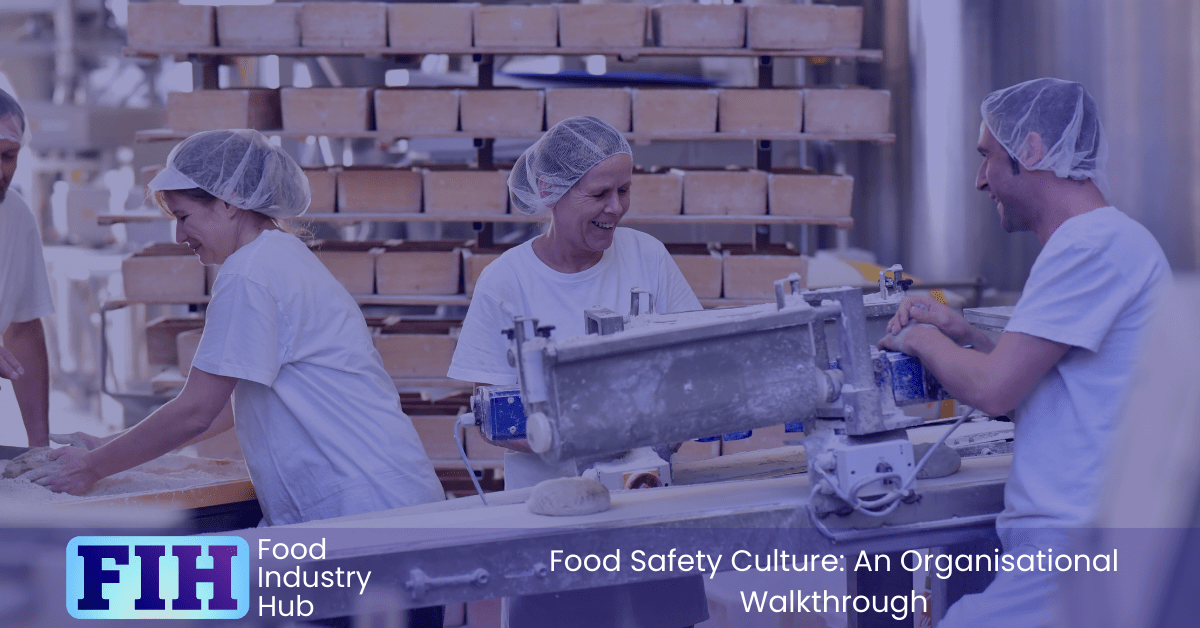
The Importance of Consistency on Food Safety Culture
By upholding unwavering and consistent standards, organisations not only prioritise safety but also cultivate a sense of accountability that resonates throughout every aspect of their operations. The impact of consistency on food safety is profound, shaping not only the quality of products but also the reputation of the business. It is this dedication to consistency that underpins a culture where safety is not just a priority but a way of life, ensuring that every measure taken is a step towards safeguarding consumers and upholding industry standards.
- Consistency is the backbone of a strong food safety culture.
- Key in upholding high standards and preventing risks.
- Reduces errors and contamination risks.
- Promotes trust and reliability within the organisation.
- Creates a foundation for prioritising safety.
Consistency
Consistency is the backbone of a strong food safety culture, ensuring that practices and protocols are reliably followed all the time. Consistency is key in upholding high standards and preventing potential risks.
By maintaining consistency in procedures, training, and monitoring, you create a solid foundation for a culture that prioritises the safety of products and consumers.
Consistency in food safety practices means that everyone involved in the handling and preparation of food follows the same processes without fail. This uniformity helps reduce the likelihood of errors or oversights that could lead to contamination or foodborne illnesses.
Whether it’s washing hands thoroughly, storing food at the correct temperature, or properly sanitising surfaces, each step must be consistently executed to minimise risks.
A consistency of approach brings a sense of reliability and assurance to employees that expectations will always be the same and that a dedication to food safety will not be met with conflict or mixed messages. In essence, food safety is not a priority some of the time but – all the time. Making a priority of food safety isn’t something that shifts or changes depending on the mood of a particular manager. Consistent adherence to food safety standards becomes a reliable fixture of the organisational environment.
Consistency promotes trust and reliability within the organisation. When employees observe that food safety protocols are consistently enforced, they’re more likely to take the necessary precautions seriously. This not only creates a safer environment but also instils a sense of responsibility and accountability among staff members.
Accountability For Food Safety
Accountability for food safety is crucial in guiding behaviours and ownership. One way to establish accountability is through clear role assignments. Assigning specific responsibilities to particular individuals ensures that each person understands their role in upholding food safety standards. This clarity helps in holding individuals answerable for their actions and decisions related to food safety.
Regular training and education also play a significant role in cementing accountability. By providing employees with the necessary knowledge and skills, they’re better equipped to fulfil their food safety responsibilities. Continuous learning opportunities not only empower individuals but also create a sense of ownership and pride in maintaining food safety standards.
Training is particularly important for accountability purposes because a signed training record substantiating understanding and competence in an employee’s role allows for that employee to be held accountable for correctly adhering to the trained behaviour. By contrast, if you’re unable to demonstrate that an employee has been provided with adequate training, then it is unreasonable to hold that person accountable for performing an activity in a particular way. In other words, before there can be accountability (and discipline), there must first be training, competency and ownership.
Food Safety Performance Measurement
Effective food safety performance measurement is essential for evaluating and improving adherence to established standards within an organisation. Management guru Peter Drucker once said, “[only] what gets measured, gets managed.” By implementing robust measurement practices, you can track and assess the effectiveness of your food safety processes and identify areas that may require attention.
Key performance indicators (KPIs) are commonly used to quantify the success of food safety initiatives. These KPIs can include metrics such as the number of food safety training hours completed, the frequency of hygiene audits, or the rate of compliance with food safety procedures.
Regularly monitoring these KPIs allows you to proactively address any gaps in compliance and make data-driven decisions to enhance your food safety culture. Performance measurement also provides valuable insights into the overall effectiveness of your food safety management system. It enables you to identify trends, patterns, and potential risks, helping you to continuously improve your processes and mitigate any potential food safety hazards.
Performance measurement can serve as a motivational tool for employees. By setting clear goals and regularly tracking progress, you can reinforce the importance of food safety practices and create a culture of accountability (to food safety and quality outcomes) within your organisation.
Documentation
Proper documentation serves as a crucial tool in demonstrating your commitment to food safety and regulatory requirements. Keeping comprehensive records of processes, procedures, training, audits, and corrective actions not only helps in ensuring that protocols are followed consistently but also aids in identifying areas for improvement.
Documentation should be clear, organised, and easily accessible to relevant personnel. It should include detailed descriptions of food safety protocols, including HACCP plans, operational procedures, and process records. Training records should outline who received training, what topics were covered, and when the training took place. Audit reports should document findings, corrective actions, and follow-up measures.
By maintaining accurate documentation, you establish a transparent system that promotes accountability and enables quick responses to potential food safety issues.
Regularly reviewing and updating documentation is essential to adapt to changing regulations, industry best practices, and internal procedures. Implementing a robust document control system helps in managing versions, ensuring that the most current information is always available. Consistent documentation practices not only contribute to a strong food safety culture but also provide a solid foundation for continuous improvement and compliance.
Continuous Reinforcement of Food Safety
Consistently reinforcing food safety practices throughout your operations is essential for maintaining a strong food safety culture.
Reinforcement of food safety practises can come in many forms, including things like managerial feedback and social pressure.
Positive reinforcement serves to encourage adherence to good practise. Praising and acknowledging actions and behaviours that support food safety Encourages those same actions to be repeated.
Corrective reinforcement serves to discourage bad practise and redirect toward desirable behaviours. If there is deviation away from good manufacturing practises and food safety ideals, reinforcing the expected or desired behaviours can help to establish a culture that prioritises food safety.
Continuous reinforcement of food safety involves consistently communicating, training, and monitoring to ensure that all employees are aligned with the necessary practices to uphold food safety standards.
Regular training sessions are crucial to reinforce the importance of food safety protocols and keep employees informed about the latest guidelines. These sessions should cover topics such as proper hygiene practices, cross-contamination prevention, and temperature control. By providing ongoing training, you can ensure that your team remains vigilant and well-informed about best practices in food safety.
In addition to training, it’s important to continuously monitor and evaluate your food safety processes. Regular inspections, audits, and spot checks can help identify any gaps or areas for improvement in your operations. By promptly addressing any issues that arise, you can prevent potential food safety hazards and maintain a high level of safety in your establishment.
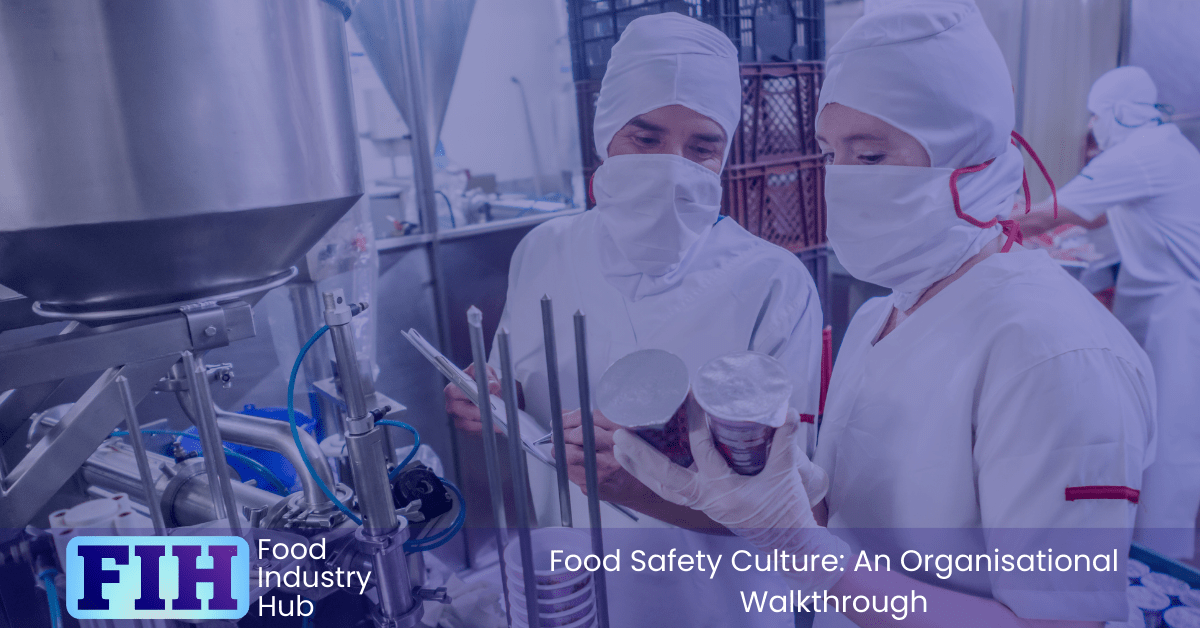
Organisational Adaptability for Food Safety Culture
By fostering a work environment that values flexibility and rapid response to change, companies can enhance their ability to navigate uncertainties and challenges effectively. Responsiveness to emerging hazards and risks in a timely and effective fashion Is key to overcoming challenge and controlling any safety issues.
- Consistency is the backbone of a strong food safety culture.
- Key in upholding high standards and preventing risks.
- Reduces errors and contamination risks.
- Promotes trust and reliability within the organisation.
- Creates a foundation for prioritising safety.
Food Safety Expectations and Current State
In assessing food safety expectations and the current state, it’s crucial to conduct a thorough examination of existing protocols and practices within your organisation. Begin by reviewing your current food safety policies, procedures, and training programs. Evaluate how well these protocols align with industry standards and regulatory requirements. Identify any gaps or areas for improvement to ensure comprehensive food safety measures are in place.
Take a detailed look at your organisation’s food safety culture. This involves assessing the attitudes, beliefs, and behaviours of employees towards food safety. Are there clear communication channels for reporting food safety concerns? Is there a strong emphasis on cleanliness and hygiene in the workplace? Evaluate if employees are empowered to take ownership of food safety practices and if there’s a shared commitment to upholding high standards.
Conduct a thorough risk assessment to identify potential hazards in your food handling processes. Evaluate the effectiveness of your hazard control measures and determine if additional safeguards are necessary. By proactively identifying and addressing risks, you can prevent foodborne illnesses and protect your customers and reputation.
Review your current food safety monitoring and verification procedures. Ensure that regular inspections, testing, and audits are conducted to verify compliance with food safety protocols. Implement corrective actions promptly when deviations are identified to maintain the integrity of your food safety system. By continuously monitoring and improving your food safety practices, you can demonstrate a strong commitment to providing safe and quality food products.
The review you carry out of your organisation food safety expectations and current state should be visible to the entire workforce and signal an authentic commitment to Product Safety and improvement. You should also take steps to evaluate as objectively as possible the maturity of your food safety and quality culture. This goes beyond operational processes and a review of your quality management system – You need to assess the values and ideals held by your workforce, evidenced by attitudes and dispositions manifested as actions and behaviours.
Ideally, the assessment of your organisation food safety and quality culture should encompass both qualitative and quantitative evaluation.
Qualitative assessment looks at the nature or quality of your organisation food safety and quality culture – so for example, what are the values held by your organisation? How would you characterise the attitudes and dispositions of employees on the shop floor?
By contrast, quantitative assessment attempts to quantify Aspects of your food safety and quality culture. This might be achieved by scoring characteristics of your food safety and quality culture on a scale of one to 10 or by ranking priorities in order relative to each other.
A full review of your organisation quality management system, expectations and standards, performance and outcomes, and cultural norms will give you a comprehensive insight into the current state for your business.
Organisational Agility for Food Safety Culture
To enhance your organisation’s food safety culture, foster organisational agility that enables swift adaptation to changing circumstances and evolving food safety requirements. Organisational agility in the context of food safety culture involves the ability to quickly respond to new food safety regulations, emerging risks, or shifts in consumer preferences.
One key aspect of organisational agility for food safety culture is the establishment of clear communication channels and decision-making processes. Ensuring that information flows efficiently within the organisation allows for rapid dissemination of new food safety protocols or best practices.
Empowering employees at all levels to make timely decisions related to food safety can significantly enhance the organisation’s responsiveness to potential risks.
Investing in ongoing training and development programs is essential for building a workforce that’s adaptable and well-equipped to handle changing food safety requirements. By providing employees with the necessary knowledge and skills, your organisation can better navigate unexpected challenges and maintain a strong food safety culture.
Change, Crisis Management, and Problem-Solving
Adapting to change, effectively managing crises, and implementing strategic problem-solving techniques are pivotal components of fostering a resilient food safety culture within your organisation.
Change is inevitable, whether due to regulatory updates, technological advancements, or shifts in consumer preferences. Embracing change proactively, by staying informed and adapting swiftly, is essential to ensure your food safety practices remain robust and compliant.
Crisis management is another critical aspect of maintaining a strong food safety culture. Having a well-defined crisis management plan in place, that includes clear roles, communication strategies, and rapid response protocols, is key to effectively navigating turbulent times and safeguarding both consumers and your brand. Defined crisis management processes empower your people and culture to respond to -and control- crisis events competently and without panic.
Adept problem-solving skills are indispensable for addressing food safety challenges efficiently. Whether it’s identifying the root cause of a contamination issue, optimising processes to enhance hygiene standards, or resolving compliance discrepancies, a structured problem-solving approach can prevent recurring issues and drive continuous improvement in your food safety practices.
Building a Culture That Can Adapt to Food Safety Demands
Maintaining a food safety culture that can effectively adapt to evolving demands requires a proactive and strategic approach to organisational practices and mindset.
It’s essential to establish clear communication channels within the organisation to ensure that all employees are informed about the latest food safety regulations, protocols, and best practices. Regular training sessions and workshops can help reinforce the importance of food safety and keep employees up to date with any changes in requirements. This means that when people are faced with new challenges they are equipped with the knowledge and capability needed to effectively adapt and make decisions in line with your food safety objectives.
Fostering a culture of continuous improvement is crucial. Encouraging employees to provide feedback, report any food safety concerns, and actively participate in finding solutions can help the organisation stay agile and responsive to emerging challenges. Implementing feedback mechanisms and conducting regular audits can also aid in identifying areas that need improvement and making necessary adjustments promptly.
Promoting transparency, accountability, and a shared responsibility for food safety can help cultivate a mindset of adaptability and responsiveness within the organisation.
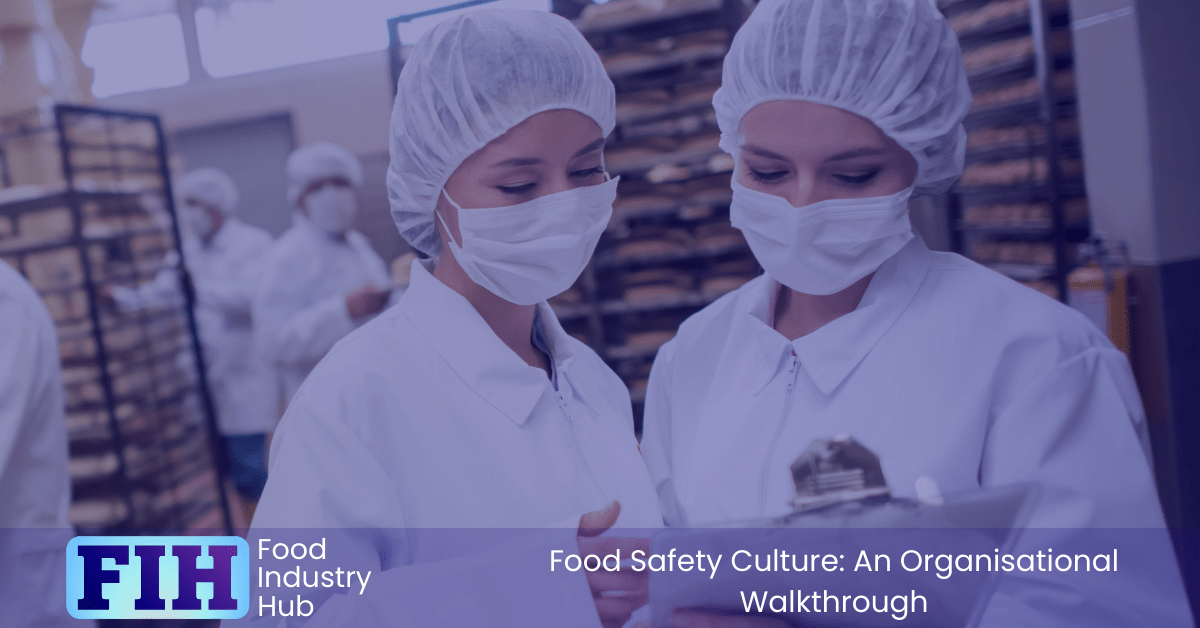
Hazards and Risk-Awareness for Food Safety Culture
By cultivating a workplace where employees are well-versed in potential dangers and equipped to handle them, you pave the way for a safer environment. But how can you ensure that your team is truly tuned in to these critical aspects of food safety? Let’s explore some key strategies that can elevate your hazard and risk-awareness efforts to new heights.
- Thorough training programs are crucial for hazard and risk awareness.
- Regular assessments and evaluations help gauge employee awareness.
- Use quizzes, demonstrations, and scenario-based training for effective education.
- Open communication channels foster understanding of hazards and risks.
- Establish clear reporting structures and protocols for managing food safety concerns.
Foundational Hazard Information and Education
Foundational hazard information covers a wide range of topics, including biological, chemical, allergenic, and physical hazards. Biological hazards encompass spoilage and pathogenic microorganisms that can contaminate and/or grow on food. Chemical hazards involve substances like cleaning agents, pesticides, and toxins. Physical hazards refer to foreign objects such as glass, metal, or wood that can inadvertently end up in food products. Allergenic hazards refer to allergens, which are disproportionately dangerous to consumers as they can elicit an immune response on exposure.
Education on these hazards should be ongoing and interactive. Training sessions, workshops, and visual aids can help employees grasp the importance of hazard awareness. By highlighting real-life examples and case studies, workers can better understand the potential consequences of overlooking food safety protocols.
Quizzes, assessments, and practical demonstrations can reinforce learning and ensure that employees retain key information. Regular updates on new hazards or revised protocols are also essential in keeping staff informed and vigilant.
Ultimately, by laying a strong foundation of hazard information and education, organizations can enhance their food safety culture and minimize risks in the workplace.
Remember that food safety and quality culture reflects both information/competence and the values and dispositions adopted by employees. With this in mind, training and educational processes should impart information while also instilling a sense of importance. This serves to ensure that food safety information is acted upon and not merely learned.
Employee Engagement for Food Safety Culture
When employees are engaged in food safety initiatives, they become more invested in upholding high standards and identifying potential hazards. To Improve engagement, organisations must prioritise open communication channels that allow employees to voice concerns, provide feedback, and actively participate in the development of food safety protocols.
Encouraging employee engagement can be achieved through various strategies. Training programs that emphasise the importance of food safety, regular workshops on hazard recognition, and hands-on practice sessions can all contribute to fostering a strong food safety culture. Additionally, incorporating food safety responsibilities into job descriptions and performance evaluations reinforces the message that food safety is a top priority for the organisation.
Creating a positive work environment where employees feel empowered to take ownership of food safety practices can significantly impact the overall culture. Recognising and rewarding employees who demonstrate exemplary food safety behaviours not only motivates individuals but also sets a precedent for others to follow suit. It’s clear that employees will be more motivated to engage with quality processes if they can see that doing so has the potential to expose them to recognition and reward – so recognition and rewards have the dual effect of both influencing behaviours and promoting engagement.
Ultimately, employee engagement is a cornerstone of establishing a sustainable food safety culture. By involving employees in the process, organisations can proactively mitigate risks, uphold standards, and demonstrate a genuine commitment to ensuring the safety of consumers.

In Summary
Developing a robust culture of food safety within your organisation involves instilling a collective commitment to upholding stringent food safety standards at all levels of operation. This culture should be ingrained in every aspect of your business, from production and handling to storage and distribution. It’s essential to foster a mindset where every employee understands their role in maintaining food safety and feels empowered to raise concerns or suggest improvements.
To cultivate a strong culture of food safety, it’s essential to provide comprehensive training to all staff members. Training should cover topics such as proper hygiene practices, safe food handling procedures, allergen management, and cleaning protocols. Regular training sessions and refresher courses can help reinforce the importance of food safety and keep employees informed about the latest updates and best practices.
Encouraging open dialogue and feedback channels enables employees to share observations, report incidents, and contribute ideas for enhancing safety measures. Establishing clear reporting structures and protocols for handling food safety issues can help prevent potential risks and ensure swift responses to any concerns that arise.
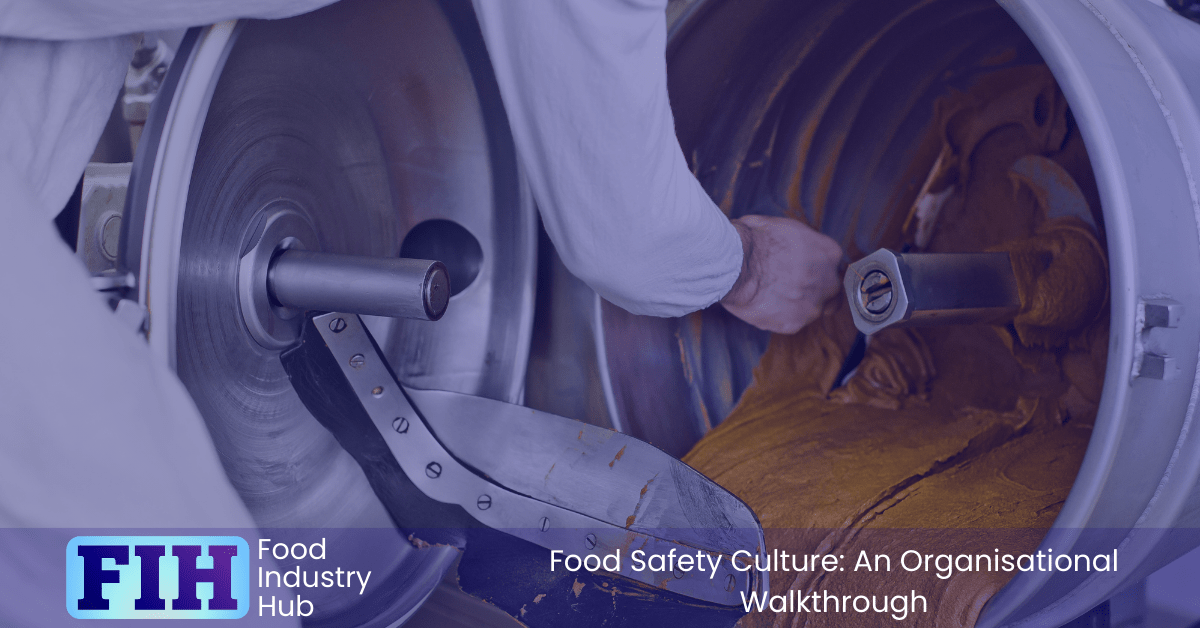
From The Food Industry Hub Knowledge Centre
Featured pages from The Food Industry Hub Knowledge Centre:
Further Resources
Food Industry Hub serves the food industry with a range of digital resources for the benefit of both commercial food manufacturers and food industry professionals.
For food manufacturers, we offer integrated management systems that give every user a direct interface with your QMS.
For food industry professionals, we provide an extensive signposting service in addition to informational content we hope you’ll find useful as you face new professional challenges. We have very ambitious plans to expand the range of services offered, and currently present informational content on management, safety and quality, food safety and quality culture, and professional success.


